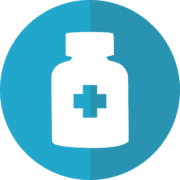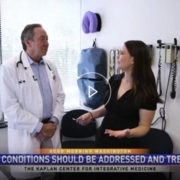The Problem With Opioids for Chronic Pain
Nor shall any man’s entreaty prevail upon me to administer poison to anyone; neither will I counsel any man to do so. – Hippocratic Oath
When it comes to the treatment of chronic pain, the medical profession may be in violation of what can be regarded as the first medical ethic: First do no harm.
In 2015, a report – The Role of Opioids in the Treatment of Chronic Pain – published by an independent panel of experts convened by the National Institutes of Health, stated:
- Together, the prevalence of chronic pain and the increasing use of opioids have created a “silent epidemic” of distress, disability, and danger to a large percentage of Americans. The overriding question is: Are we, as a nation, approaching management of chronic pain in the best possible manner that maximizes effectiveness and minimizes harm?
More recently, the Centers for Disease Control in an attempt to address the massive public health crisis identified by the NIH issued a new set of twelve guidelines aimed at reducing the risk of opioid over-prescription and over-use. Although these recommendations are not yet mandated, they are a necessary first step in rethinking how we look at chronic pain treatment and how narcotics are prescribed.
A Brief History of Opioid Medication Use/Misuse
In 1997, the American Academy of Pain Medicine, in an acknowledgment of 1) the severity of the suffering of patients with chronic pain, and 2) the medical profession’s inability to provide many of these patients with acceptable treatment solutions, issued a consensus paper endorsing the use of opioid medications for the treatment of chronic non-cancerous pain. The Academy openly acknowledged that one of the problems with the long-term use of opioids is addiction. In response, the medical profession began making the distinction between addiction and dependence. Addiction was defined as a craving for opioids with the intention of getting “high” consistent with drug-seeking behavior. Dependence, on the other hand, was defined as any situation in which an opioid medication was prescribed for medical reasons, with a dosage sufficient to control the pain, and a significant improvement in the quality of life of the patient. While the intention was noble, the consequences have been quite disastrous.
Since the release of the AAPM’s paper, the sales of prescription opioid medications measured in grams has skyrocketed. Between 1997 and 2007, sales rose by 866% for oxycodone, 525% for fentanyl, 280% for hydrocodone, and 222% for morphine. As reported in Pain Physician in July 2012, “Gram for gram, people in the United States now consume more narcotic medication than any other nation worldwide.” The report goes on to document that over 90% of patients taking opioid pain medications were prescribed these medications for the treatment of chronic pain.
In 2011, approximately 17,000 drug overdose deaths involved prescription opioid medications. The CDC also reported that “In 2007 there were more opioid analgesic deaths than overdoses involving heroin and cocaine combined.” While a significant number of these drug overdose deaths are associated with diversion of the medication to people who were not originally prescribed the medication, 60% of the deaths occurred in patients that were given prescriptions based on the prescription guidelines by medical boards.
Furthermore, significant side-effects from opioid medications include increased risk of birth defects, falls and fractures, addiction, constipation, heart attacks, a decrease in the production of testosterone, and in some cases, hyperalgesia, an actual worsening of the pain.
Deciphering the Problem
While the NIH report and recent CDC guidelines offer a number of important policy and institutional points to address, I believe that the fundamental basis of our problem comes from a lack of understanding of what we’re treating. Acute pain and chronic pain (not associated with ongoing tissue damage such as in cancer) are two very different phenomena in the body.
1. Chronic pain is not a thing but one manifestation of a complex physiological process that frequently impacts many body systems, including sleep, gastrointestinal, psychological, and endocrine. Thus, we must take a whole-person approach in our diagnosis and treatment, which requires looking at multidisciplinary treatment options.
2. Unquestionably the evidence supporting the use of long-term opioids in the treatment of chronic pain is insufficient. We need better studies to help us understand when long-term use is beneficial.
3. Physicians need to be better educated about the diagnosis and treatment of patients suffering from chronic pain. Ultimately the use of long-term opioid medications is an admission of treatment failure. The recent CDC guidelines are a step in the right direction in this regard.
As a pain specialist, I believe there is an important role for opioid medication, but that role should be limited. Opioids should only be prescribed with close monitoring by the diagnosing physician, for the purpose of relieving pain and improving quality of life when all other medical approaches have been exhausted.
First, do no harm. Opioids should be medications of last resort.
Dr. Kaplan explains how treating the symptoms of chronic pain is contributing to a system of mismanagement in this country. He discusses why we must shift the way chronic pain is treated by addressing its root cause – inflammation of the Central Nervous System.









Leave a Reply
Want to join the discussion?Feel free to contribute!